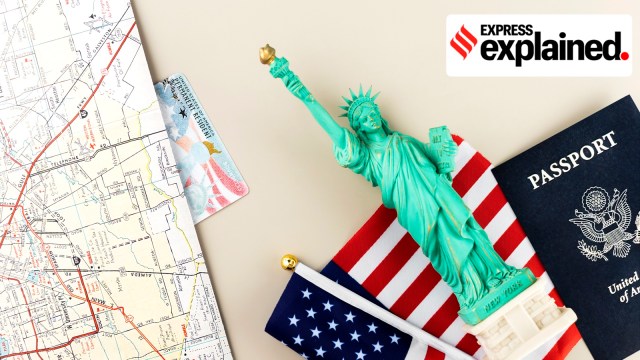Last year, over 80,000 Indians submitted fresh petitions for the H-1B visa, which is the pathway for non-citizens to secure employment in speciality occupations in the United States.

The current annual statutory cap for H-1B is 65,000 visas, with 20,000 additional visas for foreign professionals who graduate with a master’s degree or doctorate from a US institution of higher learning.
However, ever since the announcement, various countries have come forward to welcome the talent pool from India, hinting at special visa policies to absorb them. Here is what the countries are offering, and how many prospective H1-B applicants can find space in other parts of the world, if not the US.
New vistas, from Germany to the UK
Countries making such announcements include Germany, the UK, and China. More recently, Canadian Prime Minister Mark Carney said that his country will soon announce some proposals to admit foreign workers. “Not as many H1B visa holders will get visas in the US. These people are skilled, and this is an opportunity for Canada; we will soon bring a proposal on this,” he said.
Although the proposal is not public yet, Ottawa could consider reintroducing a 2023 visa program, which allowed those already on H-1B visas to migrate to Canada under more favourable terms for up to three years. The scheme closed in July this year, after the state cap of 10,000 applicants was reached.
British Prime Minister Keir Starmer is thought to be exploring proposals to abolish visa fees for skilled foreign workers, as per a report in the Financial Times, which cited people briefed on the discussions within the Treasury department. Starmer’s “global talent task force” is working on ideas to lure top global scientists to the UK, including academics and digital experts, as it seeks to stimulate economic growth. One option being considered is abolishing all visa charges for top professionals.
Story continues below this ad
Meanwhile, German Ambassador Philipp Ackermann also extended an open invitation to skilled Indian workers, pitching Europe’s largest economy as a stable and rewarding alternative to the US. “Here is my call to all highly skilled Indians,” Ackermann posted on X in late September. “Germany stands out with its stable migration policies, and with great job opportunities for Indians in IT, management, science and tech.”
Estimates say the German economy will need nearly 288,000 immigrants annually until 2040 to offset the effects of an ageing population. Berlin has already announced plans to issue 10 per cent more professional visas. Around 130,000 Indian professionals already live and work in Germany, with earnings far above the local median.
Closer home, in Asia
Soon after the US presidential proclamation, Beijing announced the new K Visa aimed at attracting skilled workers in STEM fields. The K visa came into effect on October 1, following a proclamation last month by the State Council, China’s cabinet.
Ministry of Foreign Affairs spokesman Guo Jiakun on Tuesday (September 30) said the visa’s purpose was to “promote exchanges and cooperation” between STEM talent from China and other countries.
Story continues below this ad
Immigration experts say the main attraction of the K visa is that it does not require a sponsoring employer, regarded as one of the biggest hurdles in seeking H-1B visas. However, it’s not clear if there would be a cap on K-visas.
South Korea has also instructed its ministries to find ways to exploit the US visa changes to attract scientists and engineers. Although the details are not out yet, the country plans to focus next year’s budget on initiatives around artificial intelligence (AI) and other areas designed to promote a technology-led economy.
The effect on US companies
While the steep hike for H-1B visas is designed to encourage US companies to favour American workers over foreigners, it is expected to deal a blow to big tech companies, as they rely heavily on overseas skilled workers. Roughly two-thirds of existing H-1B jobs are in tech-related roles.
According to the US Citizenship and Immigration Services, Amazon, Google, Meta, Microsoft, and Apple were among the companies which employed the most H-1B visa holders last year. In FY2024, Indian nationals received approximately 71% of all H-1B approvals.
Story continues below this ad
With tighter immigration rules introduced in recent years, US big tech and Indian IT firms are reducing their reliance on H-1B visas by setting up Global Capability Centres (GCCs) and hiring local talent in India.
India has around 1,600 GCCs of multinational companies, ranging from trade and apparel to automobiles. These are headquarters that can help manage functions such as designing, inventory, supply chain management and transportation. India-based GCCs employ more than 2 million professionals as of 2025.








































